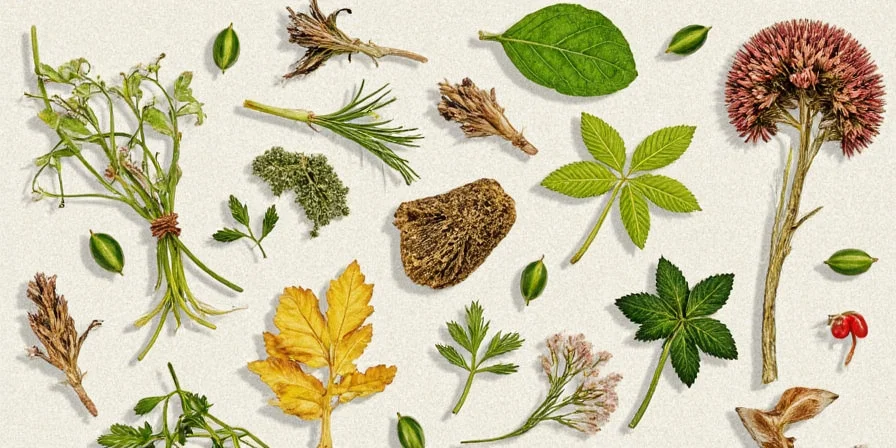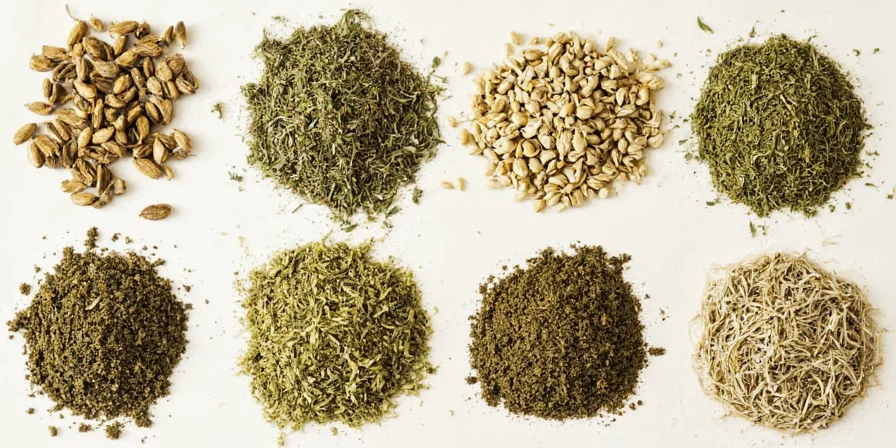Herb Hysteria: Why Dried Herbs Are Like the Spice World’s Secret MVP (And How to Use Them Right!)
Table of Contents
- Intro: Fresh vs. Dried – A Flavor Face-Off
- Why Dried Herbs Deserve More Love
- The Holy Ratio: From Fresh to Dried Herb Conversion
- Pro Tips for Using Dried Herbs Like a Boss
- Storage Secrets: Keep Your Herbs Spicy, Not Sad
- Recipe Rescue Squad: Which Herbs to Use When
- Conclusion: Embrace the Power of Dried Herbs
Intro: Fresh vs. Dried – A Flavor Face-Off
You’ve probably seen recipes that call for either fresh or dried herbs, and maybe you’ve wondered… do they really taste different? Can I swap one for the other?
The short answer is: Yes, they do. And yes, you can — but there’s a science (and a little bit of art) to doing it right.
Dried herbs are like the mature version of their leafy green selves. They’re more concentrated in flavor, which means using them the same way as fresh can turn your dish from "yum" to "uh-oh."

Why Dried Herbs Deserve More Love
Let’s bust some myths about dried herbs. Some people think they’re the lazy person’s shortcut. But here's the twist: when used correctly, dried herbs can actually outshine their fresh counterparts.
- They last longer (no fridge required).
- They’re shelf-stable and ready when you are.
- They often have deeper, earthier flavors because of the concentration during drying.
- No washing, chopping, or wilting involved.
In fact, most professional chefs keep a stash of dried herbs in their pantry at all times — not just for convenience, but for flavor depth.

The Holy Ratio: From Fresh to Dried Herb Conversion
If fresh herbs are like a summer breeze, dried herbs are like a warm hug from grandma. So how do we translate that into cooking terms?
| Fresh Herb | Dried Herb Equivalent |
|---|---|
| 1 tablespoon chopped fresh basil | 1 teaspoon dried basil |
| 1 tablespoon chopped fresh oregano | 1 teaspoon dried oregano |
| 1 tablespoon chopped fresh thyme | ¾ teaspoon dried thyme |
| 1 tablespoon chopped fresh rosemary | ½ teaspoon dried rosemary |
| 1 tablespoon chopped fresh parsley | ½ teaspoon dried parsley |
This general rule applies across the board: Use ⅓ of the amount in dried form compared to fresh. Why? Because the water content is gone, leaving behind pure, punchy flavor.

Pro Tips for Using Dried Herbs Like a Boss
Just having dried herbs isn’t enough — you’ve got to use them wisely. Here’s how:
- Add early: Unlike fresh herbs, dried ones need time to rehydrate and release their oils. Throw them in at the beginning or midway through cooking for best results.
- Toast first: For extra flavor pop, toast your dried herbs in oil before adding other ingredients. It wakes up those aromatic compounds!
- Don’t overdo it: Remember, they’re potent. Start with less and adjust later — you can always add more, but you can’t take it out.
- Use them whole or ground?: Whole leaves (like bay or sage) work great for slow-cooked dishes. Ground herbs (like garlic powder or paprika) disperse flavor evenly and are perfect for rubs or sauces.
- Combine wisely: Mix strong herbs (like rosemary, thyme) with milder ones (like marjoram, savory) for balanced flavor without overpowering your dish.

Storage Secrets: Keep Your Herbs Spicy, Not Sad
Dried herbs don’t last forever, but with the right storage, they can stay flavorful for up to a year (sometimes even longer!).
- Dark and cool wins: Store in airtight containers away from heat, light, and moisture. Think kitchen cabinets, not countertops.
- Avoid humidity: Humidity ruins herbs fast. If you live in a tropical climate, consider storing them with silica packs.
- Check the scent: If your herbs smell faint or dusty, it’s time to toss ’em. Good dried herbs should smell vibrant and aromatic.
- Label everything: Write down the purchase date on your jars so you know what’s still fresh and what’s past its prime.

Recipe Rescue Squad: Which Herbs to Use When
Want to impress at dinner without sweating over every step? Here’s a quick cheat sheet on which herbs to reach for in common dishes:
| Dish Type | Best Fresh Herb | Best Dried Herb Alternative |
|---|---|---|
| Tomato Sauce | Basil | Oregano |
| Roasted Chicken | Rosemary | Thyme |
| Chili or Stew | Cilantro | Chili powder + Cumin blend |
| Pasta Salad | Parsley | Dill |
| Beef Stir Fry | None | Hoisin & Five-spice powder |
Remember: not every recipe requires a fresh-to-dried substitution. But when you're in a pinch, these swaps can save the day and make your kitchen look like a pro’s playground.

Conclusion: Embrace the Power of Dried Herbs
So next time you're staring into the abyss of your pantry wondering if that jar of oregano has expired (spoiler: it hasn’t), remember this: dried herbs are your kitchen’s secret weapon.
They may not look as glamorous as their lush, green cousins, but when used correctly, they pack a punch that fresh herbs just can’t match in long-cook situations. Master the fresh to dried herb ratio, store them right, and you’ll never again panic over a missing bunch of basil.
Now go forth, season boldly, and let your inner spice wizard shine!












 浙公网安备
33010002000092号
浙公网安备
33010002000092号 浙B2-20120091-4
浙B2-20120091-4